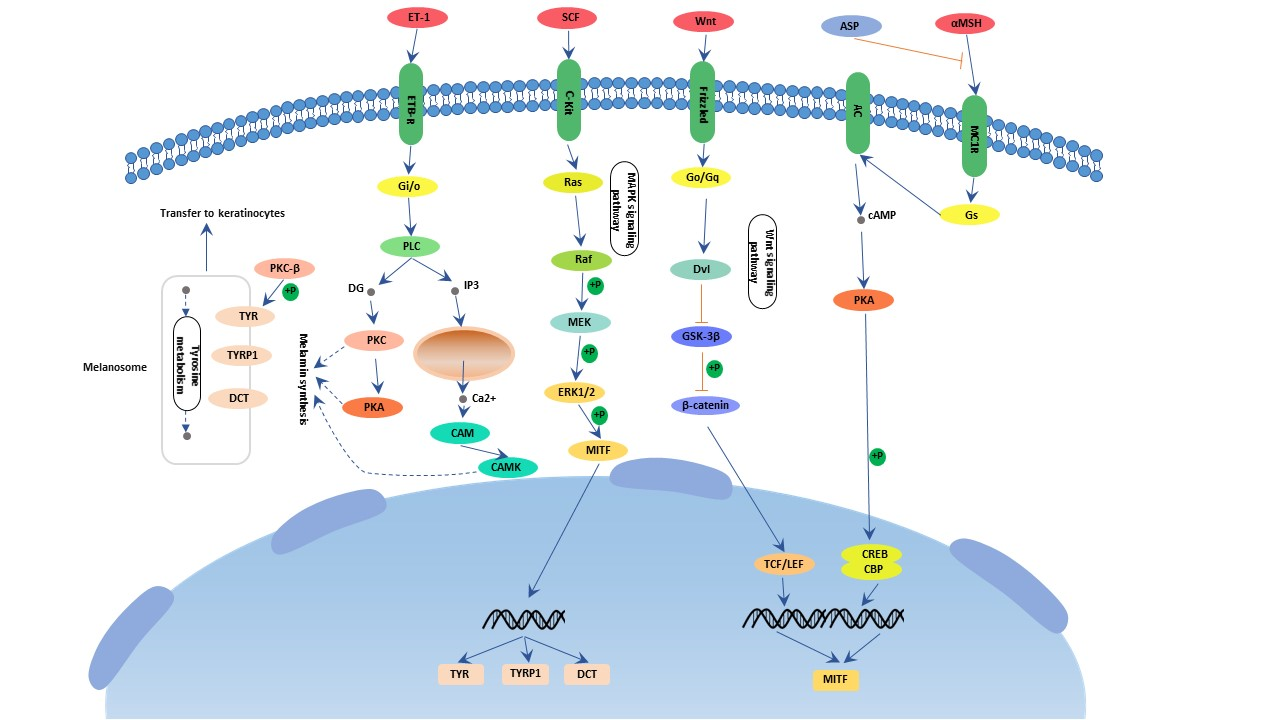
What is Melanogenesis?
Cutaneous melanin pigment plays a critical role in camouflage, mimicry, social communication, and protection against harmful effects of solar radiation. The pigment melanin is produced in melanosomes by melanocytes in a complex process called melanogenesis.
The Function of Melanogenesis
Traditionally, the purpose of melanogenesis is to protect the hypodermis, the layer under the skin, from damage by UV-B radiation. The color of the melanin is black, allowing it to absorb a majority of the UV-B light and block it from passing through the epidermis. As you know, melanogenesis is a process of producing melanin by melanocyte. In addition to their role as UV radical scavengers, the melanocyte also interacts with endocrine, immune, inflammatory and central nervous systems, and its activity is regulated by extrinsic factors such as ultraviolet radiation and drugs.
The Process of Melanogenesis
Melanogenesis is a complex process with different stages. The most important positive regulator of melanogenesis is the
MC1 receptor with its ligands melanocortic peptides. As the figure shows, MC1R activates the cyclic AMP (cAMP) response-element binding protein (CREB). Increased expression of MITF and its activation by phosphorylation (P) stimulate the
transcription of tyrosinase (TYR),
tyrosinase-related protein 1 (TYRP1), and
dopachrome tautomerase (DCT), which produce melanin. Melanin synthesis takes place within specialized intracellular organelles named melanosomes. Melanin-containing melanosomes then move from the perinuclear region to the dendrite tips and are transferred to keratinocytes by a still not well-characterized mechanism.
The Mechanisms of Melanogenesis Regulation
Melanogenesis is controlled by several other mechanisms actually. It is under hormonal control because peptides activate a receptor. A number of other molecules can stimulate the production of melanin, including cholera toxin, metabolites of Vitamin D, and derivatives of retinoic acid. When UV irradiation damages the skin’s DNA, one of the breakdown products of the DNA can also trigger this process.
